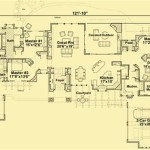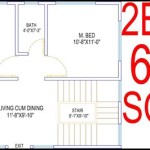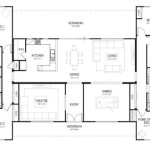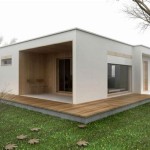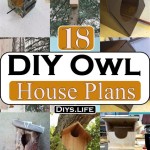A house plan with a pool house is a type of architectural design that includes a separate structure dedicated to poolside activities and relaxation. These pool houses typically feature amenities such as changing rooms, bathrooms, showers, storage space, and outdoor kitchens, providing convenience and comfort for those enjoying the pool area.
Pool houses are particularly popular in regions with warm climates and are often integrated into the overall landscaping of the property. They can enhance the outdoor living experience by offering a dedicated space for entertaining guests, hosting pool parties, or simply relaxing by the pool. Furthermore, pool houses can add value to a property and can be customized to complement the architectural style of the main house.
In the following sections, we will explore various design considerations, benefits, and key features of house plans with pool houses, providing valuable insights for homeowners and architects alike.
When considering house plans with pool houses, several key points merit attention:
- Define purpose and functionality
- Consider size and layout
- Plan for amenities and features
- Integrate with overall design
- Address privacy and access
- Ensure proper ventilation
- Maximize natural lighting
- Consider sustainability
By carefully considering these aspects, homeowners and architects can create a harmonious and functional pool house that enhances the overall enjoyment of their outdoor space.
Define purpose and functionality
The first step in designing a house plan with a pool house is to clearly define its purpose and functionality. This involves determining how the pool house will be primarily used and what specific activities it will accommodate. Some key considerations include:
- Entertainment and relaxation: Pool houses can serve as a dedicated space for entertaining guests, hosting pool parties, or simply relaxing by the pool. They can include amenities such as comfortable seating, outdoor kitchens, and entertainment systems.
- Changing and showering: Pool houses can provide convenient changing rooms and showers for swimmers, allowing them to easily transition between the pool and the house without having to go inside the main residence.
- Storage: Pool houses can offer ample storage space for pool equipment, supplies, and pool toys, keeping the pool area organized and clutter-free.
- Privacy and convenience: Pool houses can provide a private retreat for homeowners and guests, allowing them to enjoy the pool area without feeling overlooked or disturbed.
By carefully considering the intended purpose and functionality of the pool house, homeowners and architects can create a design that meets their specific needs and enhances the overall enjoyment of the outdoor space.
Consider size and layout
The size and layout of the pool house should be carefully considered to ensure that it meets the intended needs and complements the overall design of the property. Key factors to consider include:
- Proportion to pool and outdoor space: The size of the pool house should be proportionate to the size of the pool and the available outdoor space. A pool house that is too large can overwhelm the area, while one that is too small may not provide adequate functionality.
- Flow and accessibility: The layout of the pool house should allow for easy flow of traffic between the pool, the house, and the outdoor entertainment areas. Clear pathways and well-placed entrances and exits are essential for convenience and safety.
- Functionality and amenities: The layout should accommodate the intended functionality of the pool house. If the pool house will be used primarily for entertaining, it should include ample seating and an outdoor kitchen. If it will be used for changing and showering, it should include separate changing rooms and bathroom facilities.
- Privacy and views: The layout should consider privacy concerns and take advantage of desirable views. Windows and doors can be strategically placed to maximize natural light and provide views of the pool and surrounding landscape, while maintaining privacy from neighboring properties.
By carefully considering the size and layout of the pool house, homeowners and architects can create a functional and aesthetically pleasing addition to their outdoor space.
Plan for amenities and features
House plans with pool houses offer a wide range of amenities and features that can enhance the enjoyment and functionality of the outdoor space. When planning a pool house, it is important to carefully consider the specific amenities and features that will best suit the needs and preferences of the homeowners.
- Outdoor kitchen: An outdoor kitchen is a popular and convenient amenity for pool houses, allowing homeowners to prepare and cook food without having to go inside the main house. Outdoor kitchens can include features such as grills, refrigerators, sinks, and counter space.
When planning an outdoor kitchen, it is important to consider the size and layout of the space, as well as the types of appliances and features that are desired. Homeowners should also consider the location of the outdoor kitchen in relation to the pool, the house, and other outdoor entertainment areas.
Seating and dining areas: Pool houses typically include comfortable seating and dining areas, allowing homeowners and guests to relax and enjoy the poolside atmosphere. These areas can be furnished with a variety of seating options, such as lounge chairs, sofas, and dining tables, depending on the intended use of the space.
When planning seating and dining areas, it is important to consider the size and layout of the pool house, as well as the number of people that will typically be using the space. Homeowners should also consider the style and comfort of the furniture, as well as the durability of the materials used, to ensure that the furniture can withstand the outdoor elements.
Changing rooms and showers: Changing rooms and showers are essential amenities for pool houses, providing a convenient and private space for swimmers to change and shower. Changing rooms should be equipped with lockers or cubbies for storage, as well as benches or chairs for changing. Showers should be enclosed for privacy and should have hot and cold water.
When planning changing rooms and showers, it is important to consider the size and layout of the space, as well as the number of people that will typically be using the facilities. Homeowners should also consider the style and functionality of the fixtures and finishes, as well as the durability of the materials used, to ensure that the facilities can withstand the moisture and humidity of the environment.
Storage space: Pool houses typically include ample storage space for pool equipment, supplies, and pool toys, keeping the pool area organized and clutter-free. Storage space can be incorporated into the design of the pool house in a variety of ways, such as built-in cabinets, shelves, or closets.
When planning storage space, it is important to consider the size and layout of the pool house, as well as the types of items that will be stored. Homeowners should also consider the accessibility of the storage space, to ensure that it is easy to access and use.
Integrate with overall design
A well-designed pool house should complement the overall design and style of the main house and surrounding landscape. By carefully considering the architectural style, materials, and finishes of the pool house, homeowners can create a cohesive and visually appealing outdoor space.
- Architectural style: The architectural style of the pool house should harmonize with the main house and the surrounding environment. For example, a traditional-style house would be complemented by a pool house with a classic design, while a modern-style house would be complemented by a pool house with a more contemporary design.
- Materials and finishes: The materials and finishes used in the construction of the pool house should complement those used in the main house. For example, if the main house has a stone facade, the pool house could incorporate stone veneer or accents into its design. Similarly, if the main house has a wood deck, the pool house could have a wood deck or pergola.
- Color scheme: The color scheme of the pool house should complement the color scheme of the main house and the surrounding landscape. For example, a house with a neutral color palette would be complemented by a pool house with a similar neutral color palette, while a house with a more vibrant color palette could be complemented by a pool house with a more colorful design.
- Landscaping: The landscaping around the pool house should complement the landscaping around the main house and the surrounding area. For example, if the main house has a formal garden, the pool house could be surrounded by a formal garden, while a house with a more natural landscape could be complemented by a pool house surrounded by native plants and trees.
By carefully considering the overall design of the pool house, homeowners can create a cohesive and visually appealing outdoor space that enhances the enjoyment of their property.
Address privacy and access
Privacy and access are important considerations when designing a house plan with a pool house. Homeowners should carefully consider the placement of the pool house on the property, as well as the design of the pool house itself, to ensure that privacy is maintained and access is convenient.
- Location and orientation: The location and orientation of the pool house can impact privacy. Pool houses that are located close to the main house or property line may offer less privacy than pool houses that are located further away. Similarly, pool houses that are oriented towards the street or neighboring properties may offer less privacy than pool houses that are oriented towards the backyard or a more private area of the property.
- Screening and fencing: Screening and fencing can be used to enhance privacy around the pool house. Hedges, shrubs, and trees can be planted around the perimeter of the pool house to create a natural screen. Fences or walls can also be installed to provide additional privacy and security.
- Windows and doors: The placement of windows and doors in the pool house should be carefully considered to ensure privacy. Windows and doors that are located on the sides of the pool house that face neighboring properties or public areas may offer less privacy than windows and doors that are located on the sides of the pool house that face the backyard or a more private area of the property. Additionally, windows and doors should be equipped with curtains, blinds, or shades to provide privacy when desired.
- Access and circulation: The design of the pool house should allow for convenient access to and from the pool, the main house, and other outdoor areas. Clear pathways and well-placed entrances and exits are essential for convenience and safety. Additionally, the pool house should be designed to minimize disruption to the flow of traffic around the property.
By carefully considering privacy and access, homeowners can create a pool house design that meets their specific needs and enhances the enjoyment of their outdoor space.
Ensure proper ventilation
Proper ventilation is crucial in house plans with pool houses to prevent moisture buildup, condensation, and the growth of mold and mildew. By incorporating adequate ventilation into the design, homeowners can create a healthy and comfortable environment in their pool house.
- Cross-ventilation: Cross-ventilation is the movement of air through a space from one side to the other. In a pool house, cross-ventilation can be achieved by placing windows and doors on opposite sides of the structure. This allows air to flow through the pool house, carrying away moisture and preventing the buildup of stale air.
- Exhaust fans: Exhaust fans are a mechanical means of removing moisture from the air. They are particularly effective in areas where there is a lot of moisture, such as bathrooms and laundry rooms. In a pool house, an exhaust fan can be installed in the ceiling or wall to remove moisture from the air and prevent condensation.
- Dehumidifiers: Dehumidifiers are appliances that remove moisture from the air. They are a good option for pool houses in humid climates or during the winter months when the air is naturally more humid. Dehumidifiers can be placed in the pool house to help control moisture levels and prevent the growth of mold and mildew.
- Air conditioning: Air conditioning can also help to control moisture levels in a pool house. Air conditioners remove moisture from the air as part of the cooling process. In addition, air conditioners can help to circulate the air and prevent the buildup of stale air.
By incorporating proper ventilation into the design of their pool house, homeowners can create a healthy and comfortable environment that is less likely to experience moisture problems or the growth of mold and mildew.
Maximize natural lighting
Natural lighting is essential for creating a bright and inviting space in a pool house. By maximizing natural lighting, homeowners can reduce their reliance on artificial lighting, save energy, and create a more comfortable and enjoyable environment.
- Windows and doors: Windows and doors are the most effective way to bring natural light into a pool house. When planning the layout of the pool house, homeowners should consider the placement of windows and doors to maximize natural light. Windows and doors should be placed on the sides of the pool house that face the sun, and they should be sized appropriately to allow for ample light to enter the space.
- Skylights: Skylights are another great way to bring natural light into a pool house. Skylights can be installed in the roof of the pool house, and they allow natural light to enter the space from above. Skylights are a good option for pool houses that have limited wall space for windows and doors.
- Light-colored finishes: Light-colored finishes reflect light and help to brighten a space. When choosing finishes for the pool house, homeowners should opt for light-colored paint, flooring, and furniture. Light-colored finishes will help to reflect natural light and create a brighter and more inviting space.
- Mirrors: Mirrors can be used to reflect natural light and make a space feel larger. Homeowners can place mirrors on the walls of the pool house to reflect natural light and create a brighter and more spacious feeling.
By maximizing natural lighting in the pool house, homeowners can create a bright and inviting space that is both comfortable and enjoyable.
Consider sustainability
Sustainability is an important consideration for any building project, including house plans with pool houses. By incorporating sustainable features into the design of their pool house, homeowners can reduce the environmental impact of their property and save money on energy costs.
- Energy-efficient appliances and fixtures: Energy-efficient appliances and fixtures can help to reduce the energy consumption of the pool house. When choosing appliances and fixtures for the pool house, homeowners should look for products that are Energy Star certified. Energy Star certified products meet strict energy efficiency standards, which can help to reduce energy costs and protect the environment.
- Solar panels: Solar panels can be used to generate electricity from the sun. This electricity can be used to power the pool house, reducing the reliance on fossil fuels. Solar panels are a good option for pool houses in sunny climates, and they can help to save money on energy costs over time.
- Green building materials: Green building materials are materials that are produced in a sustainable way and have a low environmental impact. When choosing building materials for the pool house, homeowners should consider using green building materials, such as recycled materials, sustainable wood, and low-VOC paints and finishes.
- Water-saving features: Water-saving features can help to reduce the water consumption of the pool house. When designing the pool house, homeowners should consider incorporating water-saving features, such as low-flow toilets, faucets, and showerheads. They should also consider using drought-tolerant plants in the landscaping around the pool house.
By incorporating sustainable features into the design of their pool house, homeowners can create a more environmentally friendly and energy-efficient space that is both comfortable and enjoyable.










Related Posts

